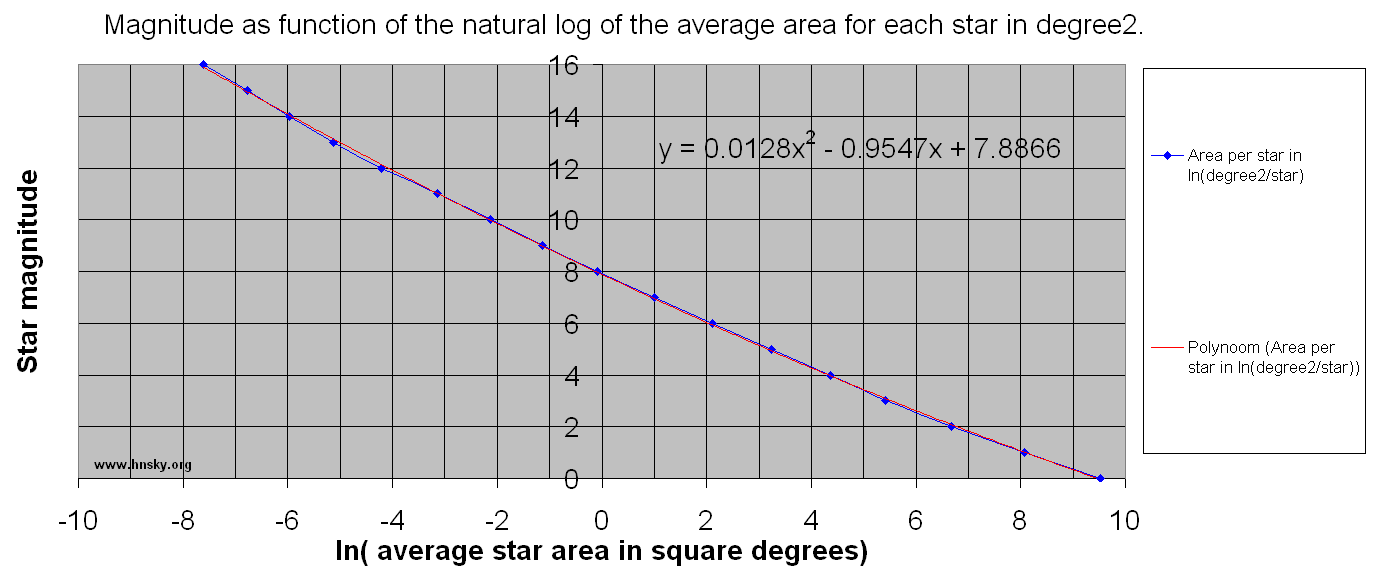| _____________ Star magnitude |
Total number of Tycho-2 or UCAC4 stars down to this
magnitude
|
ln(degree2/star) | Star density in stars/degree2 |
| 0 | 3 | 9.529 | 0.000072722 |
| 1 | 14 | 7.988 | 0.000339369 |
| 2 | 55 | 6.620 | 0.001333236 |
| 3 | 191 | 5.375 | 0.004629966 |
| 4 | 558 | 4.303 | 0.013526289 |
| 5 | 1744 | 3.164 | 0.042275713 |
| 6 | 5326 | 2.047 | 0.129105762 |
| 7 | 16503 | 0.916 | 0.400043633 |
| 8 | 48559 | -0.163 | 1.177102271 |
| 9 | 139375 | -1.217 | 3.378542167 |
| 10 | 382925 | -2.228 | 9.282355223 |
| 11 | 1048084 | -3.235 | 25.40624924 |
| 12 | 2955951 | -4.272 | 71.65420697 |
| 13 | 7346735 | -5.182 | 178.0897147 |
| 14 | 17214116 | -6.034 | 417.2815553 |
| 15 | 39387795 | -6.861 | 954.7861974 |
| 16 | 88896114 | -7.675 | 2154.900589 |

| Star BP magnitude |
Total number of Tycho-2 or Gaia stars down to this
magnitude
|
Star Johnson-V magnitude (calculated) | Total number of Tycho-2 or Gaia stars down to this magnitude | |
| 0 | 1 | 0 | 1 | |
| 1 | 11 | 1 | 14 | |
| 2 | 43 | 2 | 52 | |
| 3 | 111 | 3 | 185 | |
| 4 | 460 |
4 | 550 | |
| 5 | 1515 | 5 | 1720 | |
| 6 | 4645 | 6 | 5173 | |
| 7 | 14081 | 7 | 16064 | |
| 8 | 41263 | 8 | 47405 | |
| 9 | 117015 | 9 | 136017 | |
| 10 | 318750 | 10 | 373520 | |
| 11 | 829419 | 11 | 973888 | |
| 12 | 2067520 | 12 | 2426684 | |
| 13 | 4935106 | 13 | 5792758 | |
| 14 | 11290234 | 14 | 13185761 | |
| 15 | 24701075 | 15 | 28678640 | |
| 16 | 51907518 | 16 | 59929965 | |
| 17 | 105387443 | 17 | 120447322 | |
| 18 | 204758304 |